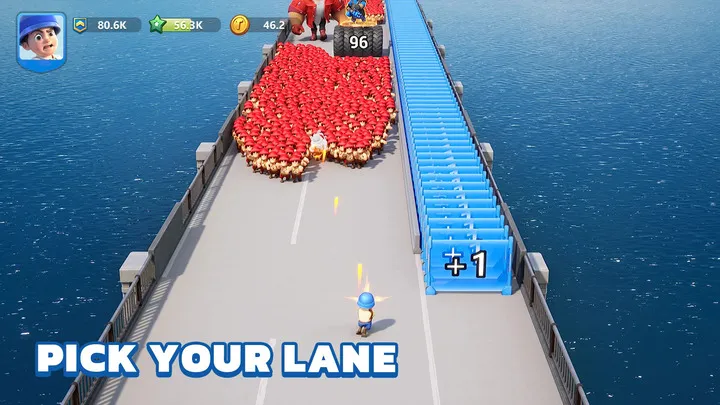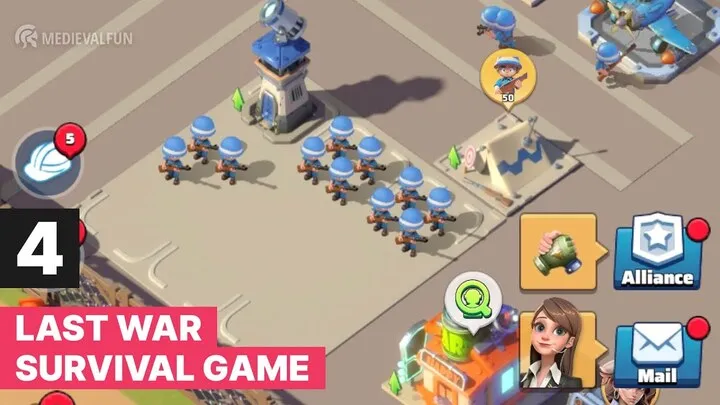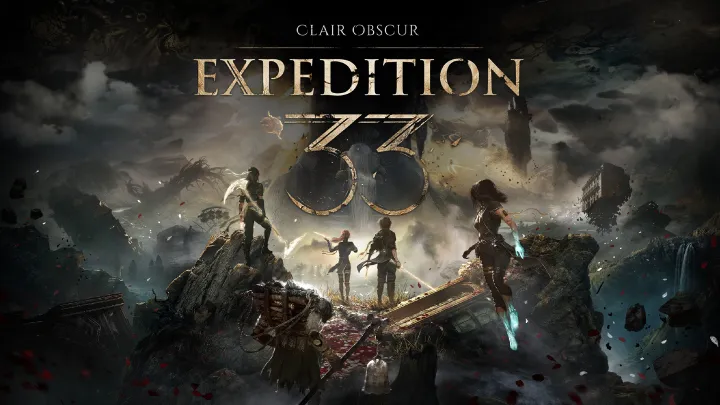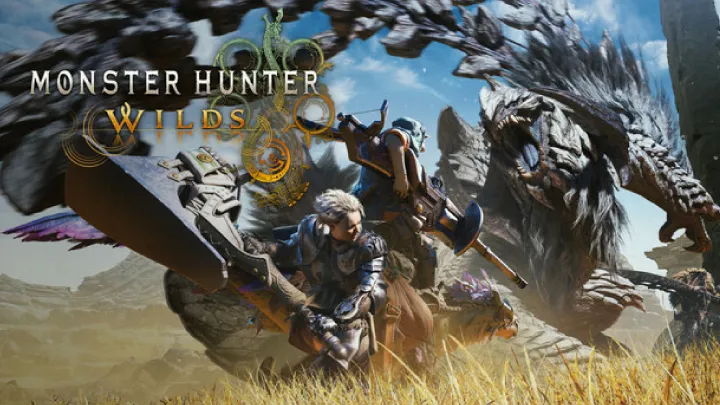In Last War: Survival, humanity teeters on the edge of extinction—not just because of the enemies that roam the wastelands, but because of the internal struggle to remain human in an environment stripped of empathy. This is not merely a game about shooting zombies or building camps; it is a reflection of how players respond to scarcity, fear, and leadership under pressure. While the game’s mechanics are built around strategy and defense, the deeper design subtly manipulates emotion, simulating the psychological toll of survival itself.

This article explores a specific, complex topic in Last War: the psychology of survival and leadership in post-apocalyptic gameplay. Rather than explaining how to win, it examines how the game’s structure shapes player emotion, behavior, and decision-making. Each phase—from base construction to moral choices—mirrors a human psychological response to prolonged crisis. The following ten sections trace this evolution chronologically, showing how Last War transforms survival from a mechanic into a mirror of the human condition.
1. The Threshold of Fear: Entering the Collapse
The beginning of Last War doesn’t just introduce gameplay—it thrusts players into emotional chaos. The first moments after the apocalypse are crucial because they establish the “fear threshold,” the point where anxiety becomes motivation.
The Shock of Loss
Players experience loss before control. Cities burn, communications break, and the world order disintegrates. This sequence doesn’t exist for spectacle—it exists to trigger an emotional alignment between player and survivor. Fear creates purpose, and that purpose fuels the early drive to rebuild.
The Biological Echo
This initial panic mirrors real psychological survival instincts. When faced with destruction, the player’s brain—through simulation—releases the same stress responses one might experience in real emergencies. Adrenaline, even virtual, pushes decision-making urgency, turning fear into gameplay rhythm.
This stage sets the tone: survival is not about dominance but endurance. Players who understand this emotional layering begin to see Last War as more than a tactical challenge—it becomes a psychological rehearsal for uncertainty.
2. Building Hope from Ruin: The Symbolism of the Base
Once players find a foothold, they begin constructing their base. This moment signifies the transition from panic to adaptation—a reflection of how humans seek stability in chaos.
The Architecture of Safety
Every wall, turret, and shelter players build symbolizes an effort to control fear. In psychological terms, the base represents “locus of control”—the sense that one’s actions can still influence outcomes. The game rewards organization not just with resources but with calm.
Emotional Reinforcement Through Progress
Each upgrade or expansion triggers positive reinforcement. The repetitive act of construction transforms despair into momentum. The base becomes a metaphorical anchor, and in multiplayer environments, it also becomes identity. Players don’t just build fortresses—they build belonging.
Thus, the base serves as both mechanical core and emotional therapy, allowing the player to reclaim power in a world designed to take it away.
3. The Burden of Command: Leadership Under Pressure
After survival becomes sustainable, Last War confronts players with a new test—leadership. Commanding survivors introduces moral and emotional tension that transcends mere management.
Delegation vs. Responsibility
Players must assign tasks: who farms, who guards, who scouts. Each choice reflects leadership philosophy. Do you prioritize the efficient, or the loyal? These choices may appear practical but carry emotional undertones that simulate real-world command fatigue.
The Weight of Consequence
Poor decisions lead to starvation, rebellion, or death. The game subtly teaches that leadership is not authority—it’s accountability. This phase captures a rare psychological truth in gaming: the more power you gain, the heavier it becomes to bear.
Through leadership, Last War evolves from survival simulator to social experiment. It asks whether one can remain humane while maintaining order.
4. The Hunger for Control: Managing Scarcity

Scarcity is the invisible antagonist of Last War. Beyond the zombies and raiders lies a more powerful enemy—limited resources. Managing scarcity exposes the psychological tension between greed and prudence.
The Illusion of Abundance
Early success in resource gathering can create false security. Players often hoard or overspend, mirroring real-world economic behavior under stress. The developers intentionally balance scarcity cycles to induce anxiety spikes, reinforcing vigilance.
Behavioral Adaptation
Over time, players adjust to scarcity by rationing and forecasting. This behavior reflects real cognitive adaptation—what psychologists call “survival calibration.” Players who succeed are not the strongest but the most emotionally resilient.
In this stage, Last War teaches that control is temporary. The real skill is not resource maximization, but emotional moderation in the face of instability.
5. Isolation and Identity: The Loneliness of Command
As the game progresses, isolation becomes a recurring theme. The player may lead a thriving base, yet internally, the tone shifts from triumph to solitude.
The Silent Burden
Leadership isolates. Players spend increasing time managing systems rather than interacting with survivors directly. This detachment is intentional—it simulates the loneliness of command.
Psychological Fallout
Over time, repetitive crisis management breeds emotional fatigue. The game’s looping structure—attacks, rebuilding, restocking—mimics burnout cycles familiar to real-world leaders and strategists. The more efficiently a player runs the base, the more emotionally drained the experience becomes.
This isolation serves a narrative purpose: survival is not just physical endurance but mental endurance against monotony and guilt.
6. Conflict and Cooperation: The Social Pulse of Survival
The multiplayer aspect of Last War transforms isolation into tension. Meeting other survivors—real or AI-controlled—introduces cooperation and betrayal, the dual currencies of trust.
The Negotiation of Power
Alliances form out of necessity, not friendship. Players exchange resources, share defense zones, or betray others for gain. Each interaction operates on psychological cost-benefit analysis.
Empathy and Exploitation
What’s fascinating is that empathy often becomes strategy. Pretending to cooperate before attacking mirrors manipulative survival instincts. This moral grayness blurs the line between hero and villain.
Through social dynamics, Last War explores how survival challenges ethics. The strongest players are often those most willing to compromise their values.
7. The Moral Frontier: Decisions Beyond Victory

Every survival scenario eventually reaches a point where winning and losing no longer mean the same thing. In Last War, this moral frontier emerges when the player’s actions begin to shape the post-apocalyptic society itself.
Sacrifice and Sustainability
Players face choices that test moral boundaries—sacrificing citizens for supplies, exploiting weaker groups, or enforcing brutal efficiency. The game’s moral weight intensifies as survival transitions into governance.
Moral Dissonance
The game never directly punishes immoral behavior; instead, it reflects it back through survivor morale and dialogue. This mirroring technique forces self-reflection. Players must reconcile victory with conscience.
In essence, Last War becomes an ethical mirror, revealing that the apocalypse isn’t about the fall of civilization—it’s about whether humanity survives within individuals.
8. Rhythm of Despair: The Cycle of Survival
No matter how advanced the player’s base becomes, Last War traps them in repetition—an intentional design reflecting existential futility.
The Return of Chaos
Periodic events reset stability: plagues, raids, and disasters. These cycles reinforce the idea that survival is never permanent. Every victory carries the seed of future loss.
Emotional Conditioning
Players adapt emotionally to this endless loop. The reward system, designed with precise timing, transforms frustration into motivation. What begins as despair turns into rhythm—a psychological surrender to the game’s cyclical nature.
By turning repetition into ritual, Last War mirrors the real human tendency to find meaning in endurance itself.
9. The Collapse of Self: Identity Erosion in Survival
As the endgame approaches, individuality begins to erode. Players, once defined by their strategic creativity, now act predictably—conditioned by the mechanics of necessity.
Mechanization of Humanity
The more efficiently players survive, the less human their behavior becomes. Decisions turn numerical; empathy becomes optional. The game subtly critiques utilitarian survival by showing how logic replaces emotion.
Digital Desensitization
After hours of gameplay, players no longer mourn losses—they calculate replacements. This desensitization reflects psychological numbing, a defense mechanism against sustained stress.
Through this transformation, Last War reveals the true cost of survival: not death, but the slow fading of empathy.
10. Reclaiming Humanity: The Emotional Resolution

Yet even after everything, Last War offers redemption. Through its community-driven missions and memorial features, players can reconnect with compassion.
The Act of Remembering
Players can honor fallen survivors, rebuild forgotten settlements, or help weaker alliances. These actions restore emotional connection. The game’s final message emerges here: survival gains meaning only when shared.
Hope as Resistance
In the face of infinite struggle, choosing kindness becomes rebellion. The act of rebuilding together becomes a symbolic defiance of the apocalypse itself.
Through this ending, Last War reminds players that the truest victory is not survival—but the refusal to become heartless.
Conclusion
Last War: Survival is not simply about tactics or defense—it is a psychological journey through fear, control, isolation, morality, and redemption. Each phase of gameplay mirrors a stage of human adaptation to crisis. From the terror of collapse to the numb rhythm of repetition, the game captures the emotional essence of survival itself.
By examining the psychology of leadership and endurance, Last War transcends its genre. It becomes a meditation on resilience—a haunting reflection of how humanity persists even when civilization fails.

















